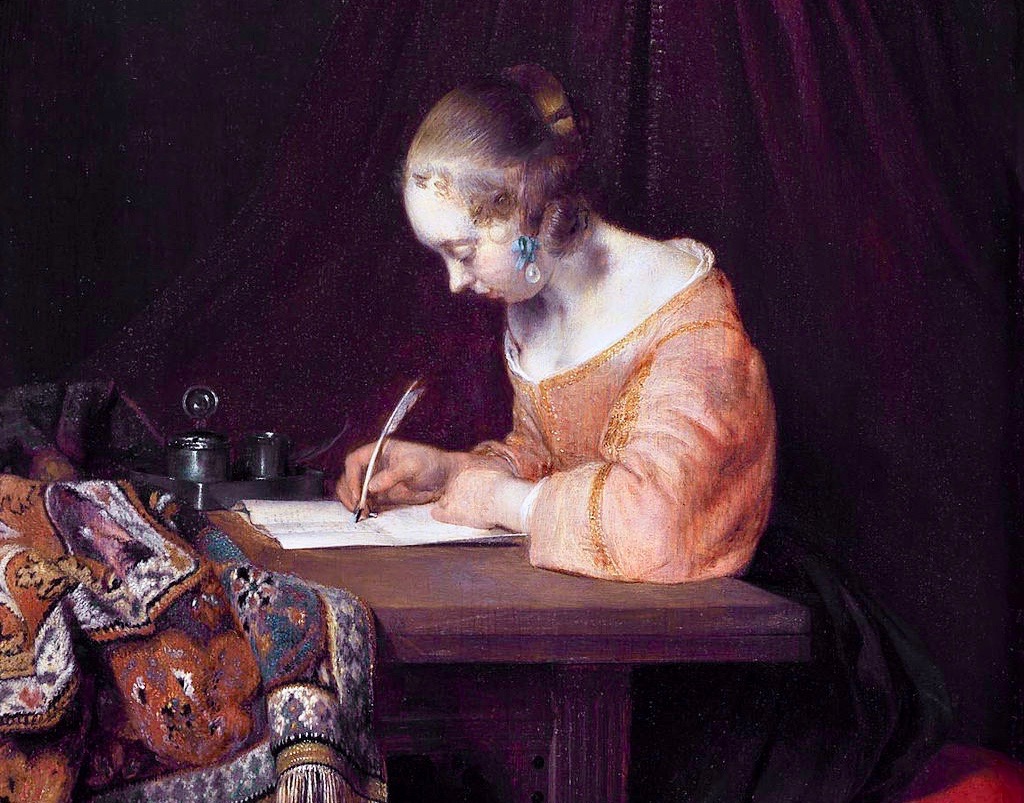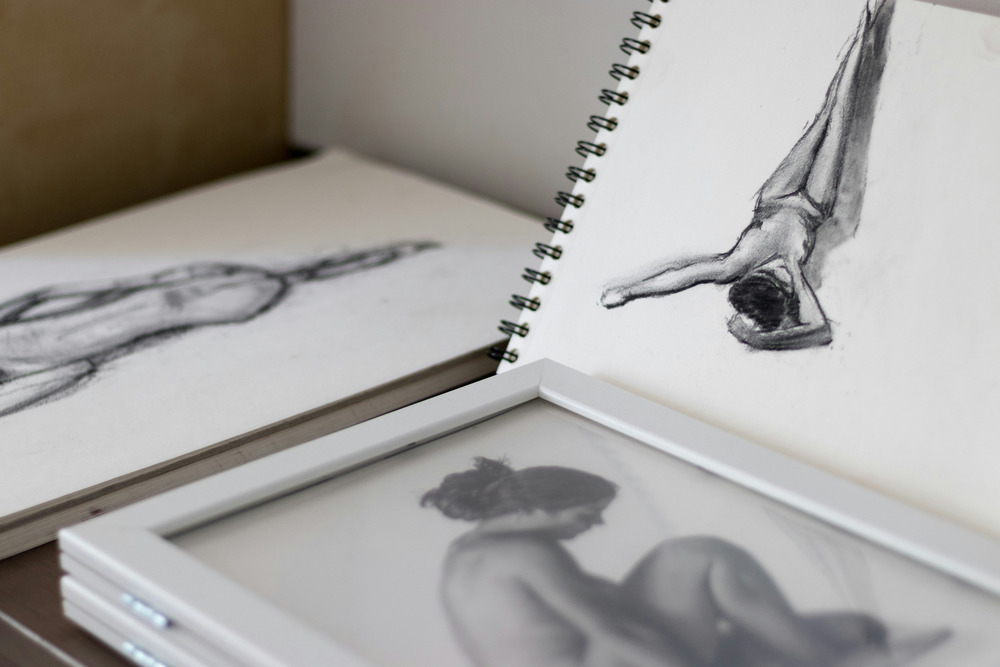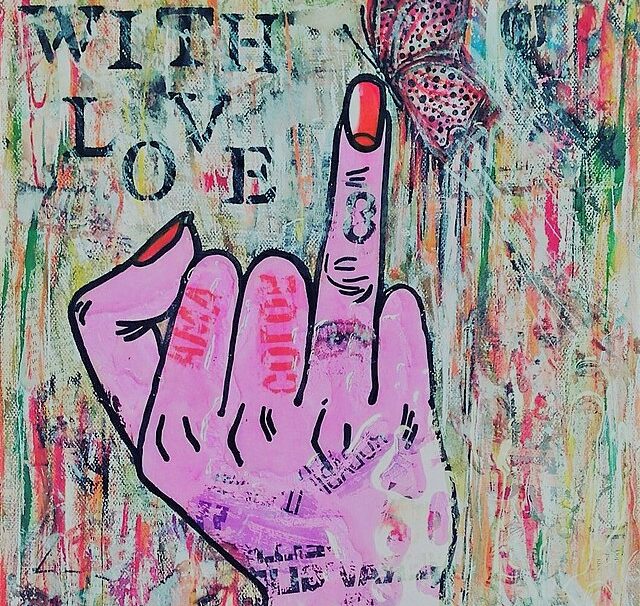Books & Culture
Literary Lists Are Records of Female Desire
For centuries, women have been using lists to reach for a radical future

I love lists. As a little girl, I built their slim towers in countless lined notebooks. I tallied toys I wanted, books I read or would read, friends I had, places I longed to visit. In essence, things I desired or already loved. In a recent essay, I remarked on the etymology of the word list, recollected in Miriam Toews’ Women Talking; as her narrator reminds us, one of the archaic definitions of list is “to like, wish, choose,” a cognate to the German gelüsten, “to desire or lust.” And why not? Except in the case of some self-help exercises, we usually make lists about what we want to have or do. Lists are lusts itemized.
The history of the literary list is a history of female desire.
Recently, I read Umberto Eco’s The Infinity of Lists, a gorgeous, erudite hardcover that celebrates the list in art and literature from antiquity to the present day. But something was off: Amidst dozens of examples by male authors and artists, a single slot was occupied by a woman. That it was incisive Polish poet Wisława Szymborska consoled slightly, but the imbalance was striking. To be fair, Eco admits his list is not comprehensive. Still, I was shocked because to me it seems obvious that the history of literary lists is in no small part a history of female desire.
Truth be told, literary lists catalog desire in all forms. One of the most famous examples is Casanova’s The Story of My Life, a compendium of conquests strained through the male gaze. In such a text, lists can amount to a fragmentation of the (usually female) body of the beloved— an additional, twisted conquest to complement the one made off the page.
Yet one of the cornerstones of the genre was written by a woman, Japanese court lady Sei Shōnagon, over a thousand years ago. Since then, there has always been an implicit connection between literary lists and female subjectivity in the Japanese literary tradition. I see hints of this idea in a scene in Yasunari Kawabata’s Snow Country, in which the male protagonist, Shimamura, belittles a geisha’s habit of listing all of the novels and short stories she reads. When she admits that she doesn’t offer any criticisms or notes on the works, Shimamura declares it “a waste of effort.” But her list could be viewed as an ever-growing, private space she is carving out in a life that otherwise belongs to her customers.
Are women’s literary lists intrinsically different from men’s? It’s tempting to see them as a part of a larger effort by female authors over the centuries to claim agency through fragments like diary entries or letters. Unlike a collection, which subsumes parts in a whole, a list yearns with each entry, honoring its disparate items. In the case of many female lit listers, their catalogs desire to transform both author and readers through that longing.
Here is my list of some favorites:
Sei Shōnagon, The Pillow Book
When memories and feelings overwhelmed her, Shōnagon broke them up into bite sizes.
In the author’s 11th-century Pillow Book, an exemplar of zuihitsu—a genre of personal reflections and other miscellany—her 164 lists are the most striking feature. They comprise a snobby-chic overview of Heian-era erotic and aesthetic tastes, sporting such titles as “Embarrassing Things” and “Things That Have Lost Their Power.” On her list of “Things That Make One’s Heart Beat Faster,” for example, she places “To see a gentleman stop his carriage before one’s gate and instruct his attendants to announce his arrival,” while “last year’s paper fan” is filed under “Things That Arouse a Fond Memory of the Past.” Sei Shōnagon and others who dwelt in the world of the Japanese court, where beauty was carefully ordered and arranged, used aesthetics as a way of boxing in the emotions. When memories and feelings overwhelmed her, Sei Shōnagon broke them up into tolerable bite sizes with such lists.
French erotica
Some of the entries in The Pillow Book detail encounters between lovers, and over the centuries, the dialogue between erotica and lists only intensified. When I was a teenager, the film Henry & June was the most fantastically naughty thing I could imagine, and it led me to Anaïs Nin’s diary and her erotica collection, Delta of Venus, with its French bordello fantasies. Her diary is, if not a vertical list as we tend to picture it, a listing, as all diaries are, of one’s self-defenses, grievances, triumphs, and grace notes. As prodigious with seduction as Casanova, sexual conquistador Nin felled everyone from Henry Miller to her own father, making her diaries more transgressive than her erotic fiction.
Erotica always involves articulation and enumeration of sexual acts. Explicit, recent French books like Catherine Millet’s The Sexual Life of Catherine M dive further into such lists. The very first section of her memoir is titled “Numbers,” and in it, Millet observes,
I, therefore, have particularly vivid memories of the thoughts that steered me into scrupulous counting exercises every evening before I went to sleep . . . I could never get to sleep until I had visualized these numerical problems one after the other. One of the problems related to the question of having several husbands.
The book, of course, goes on to enumerate many, many lovers, including copious instances of group sex. Soon Millet writes, “In fact, I had given up counting.” The irony is that her depictions of them are matter-of-fact, clinical and crystalline—exactly what Nin objected to in the erotica she was paid to write decades earlier. By the early 2000s, then, reducing the act to pure numbers, an unfolding list of unapologetic desires, was for a woman its own sensual pleasure.
Wisława Szymborska
Eco selected two poems by Nobel-prize-winning Szymborska, “Possibilities” and “Birthday,” for inclusion in The Infinity of Lists, but many of her works would have served. Often, the poet uses a list of objects to spark familiarity before shifting into a more ironic, mysterious tone. In “Identification,” for instance, she references an outside inventory—a passenger list—before moving on to the poem’s own list of personal effects:
It’s good you came—she says. You heard a plane crashed on Thursday? Well so they came to see me about it. The story is he was on the passenger list. So what, he might have changed his mind. They gave me some pills so I wouldn’t fall apart. Then they showed me I don’t know who. All black, burned except one hand. A scrap of shirt, a watch, a wedding ring.
This poem about denial in the face of death is emblematic of Szymborska’s body of work, which catalogs human frailty with gentle humor and economy. To a writer coming of age under Communism, the power to document and classify reality in this way was its own subversion.
Jeanette Winterson, Written on the Body
Winterson’s Written on the Body, in which the gender of the speaker is never made explicit, makes me question the difference between a list and a catalog. Eco sees them as the same, but I would suggest that we picture a list as vertical, whereas a catalog is an inventory spread out over many pages, like the descriptions of the inamorata’s body in this novel. And just as Luce Irigaray called the female “the sex which is not one,” I would suggest that there is a particular type of feminine catalog, which is much more than the sum of its parts. It is a symphony of multiplicity.
In Written on the Body, the lover’s body becomes such a symphonic, anatomized catalog, its bleakest details the most adoring, especially when the narrator’s girlfriend is stricken with leukemia: “Will your skin discolour, its brightness blurring? Will your neck and spleen distend? Will the rigorous contours of your stomach swell under an infertile load?” In Winterson’s hands, listing the beloved’s body parts is not an act of dismemberment or dehumanization, but dignity.
Maggie Nelson, Bluets
A love song to fragments, Nelson’s Bluets is, like her brilliant memoir of queer family-making, The Argonauts, an oblique exploration of a period in her life through critical theory, fired to poetry in her pages. Consisting of 240 prose poems, Bluets is the more list-like. In the first entry, Nelson introduces her colorful heartbreak as supposition and synesthesia: “Suppose I were to begin by saying that I had fallen in love with a color.” The very project of Bluets, she confesses, begot new lists:
I have enjoyed telling people that I am writing a book about blue without actually doing it. Mostly what happens in such cases is that people give you stories or leads or gifts, and then you can play with these things instead of with words. Over the past decade I have been given blue inks, paintings, postcards, dyes, bracelets, rocks, precious stones, watercolors, pigments, paperweights, goblets, and candies. I have been introduced to a man who had one of his front teeth replaced with lapis lazuli, solely because he loved the stone, and to another who worships blue so devoutly that he refuses to eat blue food and grows only blue and white flowers in his garden, which surrounds the blue ex-cathedral in which he lives.
Bluets references both Sei Shōnagon and Catherine Millet as it blurs memoir, lyric essay, poetry, and philosophy and shows how collage—which one could argue is a primary mode of perception in our time, given outlets like Instagram and Pinterest—can be sublime. The parts exceed their sum if you are willing to learn, along with the author, how to assemble them.
Zadie Smith, NW
In her work, Smith uses various types of lists to highlight her characters’ postmodern construction of meaning. NW is the novel that’s dizziest with lists and other piecemeal constructions, mimicking northwest London’s patchwork of ethnicities, races, and neighborhoods. In addition to more traditional scenes, the novel contains digressions like directions between places with estimated travel times, accounts of sensory attractions along those routes, and gravestone epitaphs. “Host,” the book’s longest section, consists of 185 short, numbered entries, whose titles often draw on literary and pop culture references (“That obscure object of desire,” “Rabbit, run”). The novel’s main characters stumble through these entries, lost in a constellation of urban life, adulthood, and internet ads for sex. #170, a list-within-a-list titled “In drag,” clues readers into how performative the characters—or author—feel identity to be:
Daughter drag. Sister drag. Mother drag. Court drag. Rich drag. Poor drag. British drag. Jamaican drag. Each required a different wardrobe. But when considering these various attitudes she struggled to think what would be the most authentic, or perhaps the least inauthentic.
To me, NW suggests that the jarring juxtapositions of such a disparate list may be the best path out of identity trouble and toward personal and erotic liberation.
Daša Drndić, EEG
The final novel from Croatian master Drndić, who died last year, EEG is a searing, experimental probe of personal and historical memory. Her tangents as nimble as Proust’s, Drndić incorporates into the narrative seemingly random lists that abruptly shift into laments of atrocity. For example, an extensive list of chess players who died by suicide segues into something much darker:
Lists, particularly when they are read aloud, become salvos, each name a shot, the air trembles and shakes with the gunfire. Lists of the dead—the murdered—are direct and threatening. They beat out a staccato rhythm like a march, out of them speak the dead, saying Look at us. They offer us their short lives, their faces, their passions and fears, the rooms in which they loved, their clothes, their books, their medical records. But, we have our own dreams and our own faintheartedness and a new age, we don’t have time to concern ourselves with the dead/murdered. Chess, a game of liquidation, chess-playing liquidators, what irony.
EEG’s destabilizing lists and digressions bear witness and sanctify the act of remembering, as haphazard as it is.
Alicia Elliott, A Mind Spread Out on the Ground
Some lists are a call to action. Their desire is not for personal or sensual satisfaction but for change on a large scale. In her recent book of powerful essays, A Mind Spread Out on the Ground, Alicia Elliott uses lists to accost readers about their biases and complacencies. Elliott, who is a Tuscarora writer from Six Nations of the Grand River, Canada’s largest First Nations reserve, explores how her own and her family’s experiences intersect with public policy, mental and physical health issues, the criminal-justice system, photography, and many other fields.
The collection culminates with a devastating “participatory essay” called “Extraction Mentalities.” It includes dozens of penetrating questions like “Has dealing with the criminal justice system helped anyone you know? If so, how?” and “Have you ever hurt people you love?” Each of these queries about abuse and its reckoning is followed by a space for answers that reads like both accusation and reconciliation. Near the end of the essay, Elliott includes a list of the ways in which Canada has abused minorities, including Japanese-Canadians during World War II, the disabled, and trans people. Under her auspices, lists are weaponized.
Lists do not end, as Eco points out; even though each list is finite, the reader has the sense that it could go on forever. Even during eras in which when women’s history had to be read between the lines, female authors used literary lists to reach toward the future, enumerating their own radical wishes for it. But in Elliott’s book, she doesn’t use lists to wish something for herself in the future tense. She uses them to wish something for all of us.








